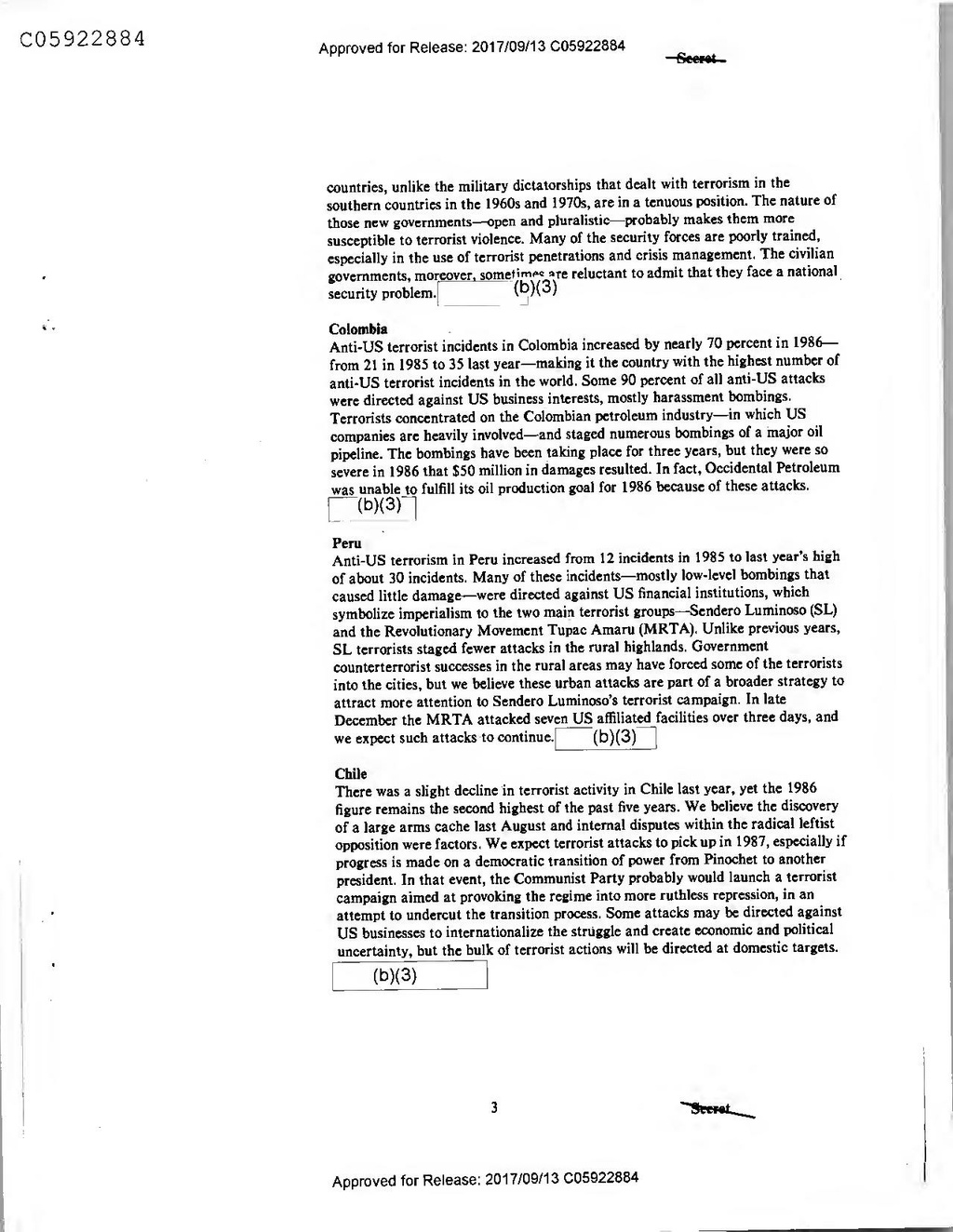countries, unlike the military dictatorships that dealt with terrorism in the southern countries in the 1960s and 1970s, are in a tenuous position. The nature of those new governments-open and pluralistic—probably makes them more susceptible to terrorist violence. Many of the security forces are poorly trained, especially in the use of terrorist penetrations and crisis management. The civilian governments, moreover, sometimes are reluctant to admit that they face a national security problem.
(b)(3)
Colombia Anti-US terrorist incidents in Colombia increased by nearly 70 percent in 1986 from 21 in 1985 to 35 last year-making it the country with the highest number of anti-US terrorist incidents in the world. Some 90 percent of all anti-US attacks were directed against US business interests, mostly harassment bombings. Terrorists concentrated on the Colombian petroleum industry-in which US companies are heavily involved—and staged numerous bombings of a major oil pipeline. The bombings have been taking place for three years, but they were so severe in 1986 that $50 million in damages resulted. In fact, Occidental Petroleum was unable to fulfill its oil production goal for 1986 because of these attacks.
(b)(3)
Peru Anti-US terrorism in Peru increased from 12 incidents in 1985 to last year's high of about 30 incidents. Many of these incidents—mostly low-level bombings that caused little damage—were directed against US financial institutions, which symbolize imperialism to the two main terrorist groups-Sendero Luminoso (SL) and the Revolutionary Movement Tupac Amaru (MRTA). Unlike previous years, SL terrorists staged fewer attacks in the rural highlands. Government counterterrorist successes in the rural areas may have forced some of the terrorists into the cities, but we believe these urban attacks are part of a broader strategy to attract more attention to Sendero Luminoso's terrorist campaign. In late December the MRTA attacked seven US affiliated facilities over three days, and we expect such attacks to continue. (b)(3)
Chile There was a slight decline in terrorist activity in Chile last year, yet the 1986 figure remains the second highest of the past five years. We believe the discovery of a large arms cache last August and internal disputes within the radical leftist opposition were factors. We expect terrorist attacks to pick up in 1987, especially if progress is made on a democratic transition of power from Pinochet to another president. In that event, the Communist Party probably would launch a terrorist campaign aimed at provoking the regime into more ruthless repression, in an attempt to undercut the transition process. Some attacks may be directed against US businesses to internationalize the struggle and create economic and political uncertainty, but the bulk of terrorist actions will be directed at domestic targets.
(b)(3)
3
Secret
Approved for Release: 2017/09/13 C05922884
